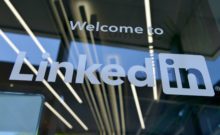As the age of retirement increases, a multi-generational workplace is forced to accommodate more in the office. There are new challenges when generations begin to work alongside one another. It is best to avoid conflict by bridging the gap for productive communication and workflow.
The first way to solving a generational crisis in your workplace environment is to acknowledge and care about each employee as an individual. When we lead with compassion, we will find that many of the values and attitudes toward work are not all that different. It is true that a person from Generation Z or a Millennial might be more knowledgeable of technology, but they may also share important communication skills with a Baby Boomer. Giving only a nod to the generational gap will give every leader more space to recognize each strength and weakness by the individual instead of making excuses or blame based on an employee’s age.
The next strategy is to recognize and implement compensation and benefits that will be attractive to each generation. Baby Boomers are beginning to search for post-retirement work, and Millennials are looking for high perks in exchange for loyalty. Young people are searching for opportunities that offer work assignments with new skills that they can use for career growth. Older people may search for continued education with research assignments or paid sabbaticals to participate in educational programs. Baby Boomers who are moving into part-time positions may still be looking for health benefits, so considering this option can allow your business to retain top talent at a lesser rate than hiring a new full-time employee.
One strategy for multi-generational workplace environments that may have the greatest return on investment is the creation of a mentorship program. Using your experience employees as mentors for new hires, you can transfer knowledge in a seamless and interpersonal way. These employees will build trust in one another when they have similar goals and needs to address. Mentoring models can be done as one-on-one sessions, group programs, or panels. Any mentoring model can be used to foster strong employee relationships and passing on the values and history of your organization.
As a leader, staying open to new ideas and feedback is imperative to shaping any employee retention strategy, especially one for a multi-generational environment. Remove your own expectations about work and take account of different perspectives to embrace a diverse and flexible work environment. After you determine the differences between the individuals that you employ, you can begin to encourage a more healthy space for collaboration.






